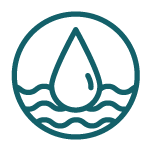Installation of a custom pond can elevate your outdoor space, offering a serene retreat and enhancing your property’s appeal. To ensure a successful project in Memphis, it’s important that you consider factors such as location, size, natural elements, and maintenance requirements. By following expert advice tailored to our region, you can create a stunning water feature that thrives in the local climate. In this post, we will share important tips to guide you through the process of designing and installing your perfect pond.
Understanding Your Space
Your custom pond installation begins with a thorough understanding of your available space. By assessing your yard’s specific layout, you can determine where a pond will fit best while also complementing your landscape. Consider not only the size but also the natural flow of your garden, ensuring a harmonious integration with existing features.
Assessing Available Area
About selecting the right area for your pond, you should measure the space and consider any slopes or drainage issues that may affect installation and maintenance. Use a level site to prevent water from collecting in unwanted areas, especially if you plan on incorporating features like waterfalls or streams.
Evaluating Sunlight and Shade
Above all, the amount of sunlight and shade your space receives will significantly impact your pond’s ecosystem. Most aquatic plants thrive in 4-6 hours of sunlight daily, while certain fish species prefer shaded areas to cool down and hide from predators. Understanding these dynamics helps ensure a balanced environment for your water feature.
Also, consider the seasonal variations in sunlight; trees may provide shade in summer but lose leaves in winter, changing the light exposure. Strategically placing your pond in an area that still receives ample sunlight while also providing shaded spots can enhance both aesthetic appeal and aquatic health.
Choosing the Right Design
Any successful custom pond installation begins with a design that reflects your vision and complements your outdoor space. You should consider factors such as the style of your home and garden, as well as how the pond will be utilized. A thoughtful design will enhance the aesthetics of your landscape while providing a serene environment to enjoy for years to come.
Shape and Size Considerations
Shape is a key factor in creating a pond that blends seamlessly into your yard. You can choose from a variety of shapes, including round, oval, or even freeform designs. Depending on your available space, you should also decide on the size of your pond. Larger ponds offer more aquatic life possibilities and greater visual impact, while smaller ponds can create intimate settings.
Integration with Landscaping
Size plays a significant role in how your pond integrates with existing landscaping features. A well-placed pond should enhance your yard’s natural beauty without overwhelming the surrounding area. You should think about how the pond’s size will interact with your plants, pathways, and other outdoor elements. By carefully planning the layout, you can create a harmonious outdoor setting that encourages tranquility and relaxation.
Considering the integration of your pond with existing landscaping elements is imperative for a cohesive design. You can incorporate native plants, decorative stones, and pathways that lead to the pond, enhancing both its aesthetic and functional appeal. By aligning your pond with the overall landscape theme, you create a seamless transition between water features and garden elements, inviting wildlife and providing you with a relaxing retreat right in your backyard.
Selecting Quality Materials
Some of the most important factors to consider when installing a custom pond are the materials you choose. High-quality materials not only enhance the aesthetic appeal of your water feature but also ensure its longevity and functionality. Investing in superior products can save you time and money on repairs and maintenance down the line, allowing you to enjoy your tranquil oasis with peace of mind.
Pond Liners and Edging
After selecting the location for your pond, the next step is choosing the right pond liner and edging. Opt for a durable, UV-resistant liner designed to withstand the elements and prevent leaks. Edging materials such as natural stone or pavers can offer a beautiful finish while providing stability and preventing soil erosion around your pond.
Pump and Filtration Systems
Materials in your pump and filtration systems play a significant role in maintaining the health of your pond. Selecting a reliable pump with adequate flow rate ensures optimal water circulation, which is vital for keeping your pond clean and supporting aquatic life. A quality filtration system will remove debris and unwanted particles, helping to maintain clear water and a balanced ecosystem.
The efficiency of your pump and filtration system directly impacts the overall health of your pond. By investing in high-quality components, you can ensure a clean and clear pond environment for your fish and plants. Be sure to evaluate the right type and size of pump based on your pond’s volume, and consider options with energy-efficient features to save on operating costs. With the right system in place, you can enjoy a flourishing pond that elevates your outdoor space in Memphis and surrounding areas.
Planning for Wildlife
Once again, it’s important to consider how your custom pond installation will impact local wildlife. By planning for wildlife, you create a balanced ecosystem that not only enhances your pond’s beauty but also attracts beneficial creatures to your outdoor space. Integrating native plants and natural habitats will support a diverse range of species, ensuring your water feature remains vibrant and healthy throughout the year.
Koi and Fish Selection
The selection of koi and fish is a key aspect of your pond’s ecosystem. Choose species that are compatible with the climate and water conditions in Memphis, and ensure that your pond provides ample space for them to thrive. Koi are popular for their vibrant colors and personality, but consider adding other types of fish to create a balanced aquatic community.
Creating Habitats for Beneficial Creatures
At MidSouth Ponds, creating habitats for beneficial creatures is vital for maintaining a healthy pond environment. Incorporate rocks, logs, and native vegetation to provide shelter and breeding grounds for insects, frogs, and other wildlife. This diversity not only contributes to the overall health of your pond but also promotes a natural balance, reducing the need for chemical controls.
Another way to enhance habitats for beneficial creatures is by including marginal plants around the perimeter of your pond. These plants provide cover and nesting sites for wildlife while helping to filter nutrients from the water. Incorporating larger rocks and gravel beds will serve as spawning areas for fish and a safe haven for tadpoles. By fostering a rich aquatic habitat, you’ll not only improve biodiversity but also create a more visually appealing and thriving pond environment for your enjoyment.
Installing and Maintaining Your Pond
Despite the excitement of adding a custom pond to your backyard, careful installation and regular maintenance are imperative to ensure its longevity and beauty. A well-installed pond not only enhances your outdoor space but also creates a serene environment for relaxation. By investing in professional services from MidSouth Ponds, you can enjoy a stunning water feature that meets your aesthetic preferences and functional needs.
Step-by-Step Installation Process
Along with the right tools and materials, following a systematic approach can lead to a successful pond installation. Below is a simplified breakdown of the typical process:
| Step | Description |
| 1 | Plan your pond’s size and location. |
| 2 | Excavate the area, ensuring edges are smooth. |
| 3 | Install the underlayment and liner. |
| 4 | Add water and allow settling. |
| 5 | Introduce plants and aquatic life. |
Seasonal Maintenance Tips
By developing a seasonal maintenance routine, you can keep your pond looking pristine year-round. Here are key tasks to consider:
- Clean debris and excess algae regularly.
- Monitor water levels and add water as needed.
- Check and clean filters and pumps.
- Prepare your pond for winter by removing plants.
Assume that a proactive approach will minimize potential issues and extend the life of your pond. Simple actions throughout the year can yield significant benefits for both the aesthetics and health of your water feature.
The maintenance of your pond goes beyond immediate cleaning; it includes regular checks for the overall health of the ecosystem. Consider the following additional tasks:
- Test water quality regularly, looking for pH and ammonia levels.
- Introduce beneficial bacteria to help maintain clarity.
- Observe fish behavior to identify any signs of distress.
- Trim aquatic plants to prevent overcrowding.
Assume that these ongoing efforts will significantly contribute to the success of your pond, ensuring a beautiful, thriving environment that you can enjoy for years to come.
Engaging Professionals
Not only can creating a custom pond be a rewarding project, but engaging professionals ensures that the installation is executed with expertise and precision. By working with experienced contractors, you can avoid common pitfalls and ensure your water feature complements your landscape beautifully. MidSouth Ponds specializes in custom pond installations and offers comprehensive services, so you can focus on enjoying your tranquil outdoor space.
When to Hire Experts
Below are some key indicators that you should engage an expert for your pond installation. If your project involves complex design elements, requires specific regulatory knowledge, or if you feel uncertain about the maintenance of water features, it’s advantageous to hire professionals. An expert can ensure that your pond meets local guidelines and incorporate features that enhance aesthetics and functionality.
Questions to Ask Potential Contractors
Below are some imperative questions to ask potential contractors to gauge their expertise and fit for your project. Start by asking about their experience with custom pond installations, specific designs they’ve completed, and their understanding of water feature maintenance. Inquire about their licensing and insurance, and request references or reviews from past clients to assess their professionalism and craftsmanship.
It’s imperative to dig deeper into their process and approach to custom pond installations. Ask potential contractors how they manage potential challenges during installation, their recommended pond maintenance practices, and the materials they typically use. This information helps you evaluate their reliability and commitment to quality craftsmanship, ensuring that your pond reflects your vision and stands the test of time.
Summing up
Taking this into account, the best tips for custom pond installation in Memphis involve selecting the right location, considering the style and materials that complement your landscape, and understanding the local ecosystem. You should also plan for proper filtration and aeration to keep your pond healthy. Engage professionals who can provide expert guidance tailored to your needs and ensure your installation meets local regulations. By following these guidelines, you can create a stunning water feature that enhances your outdoor space and brings tranquility to your home.



